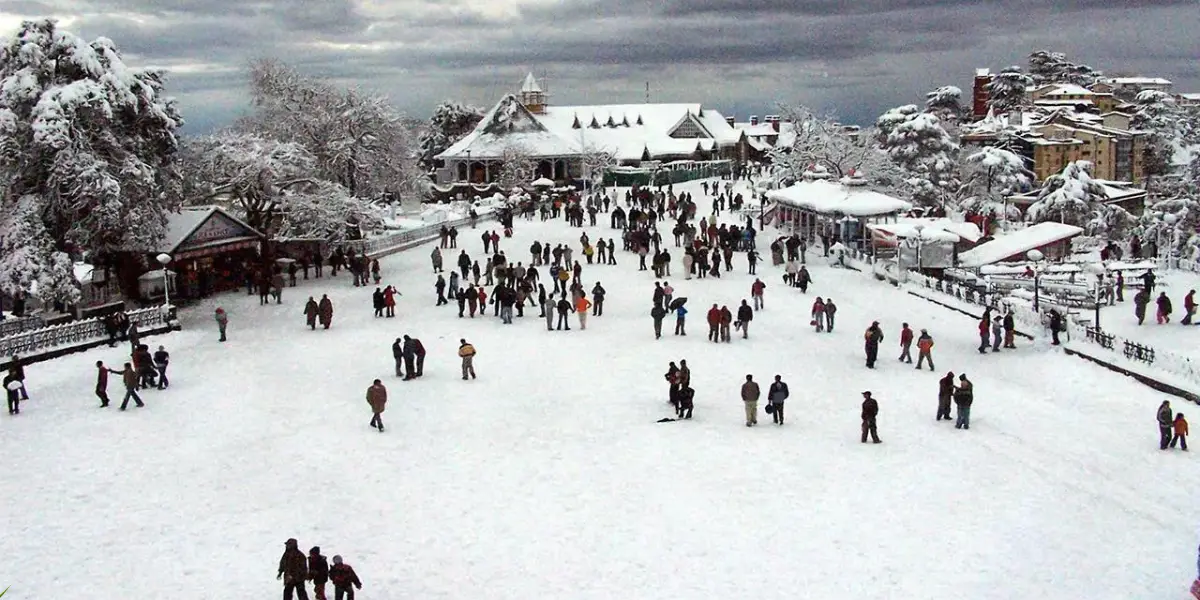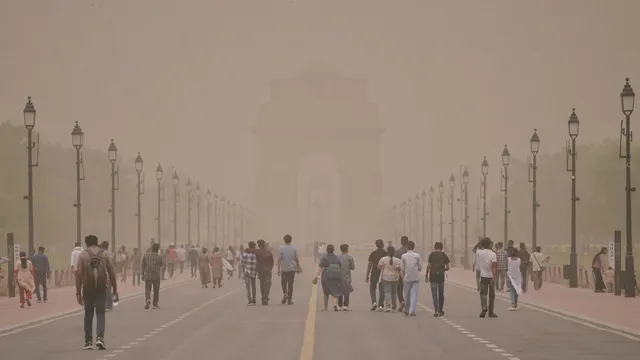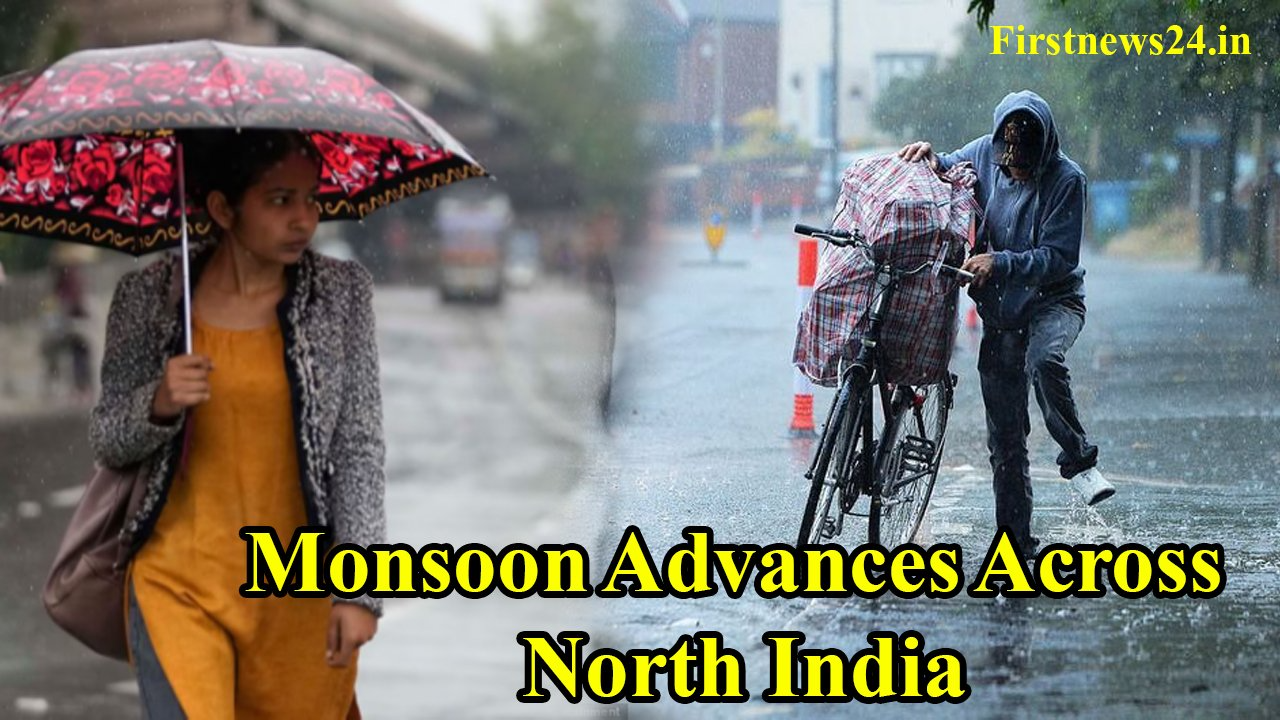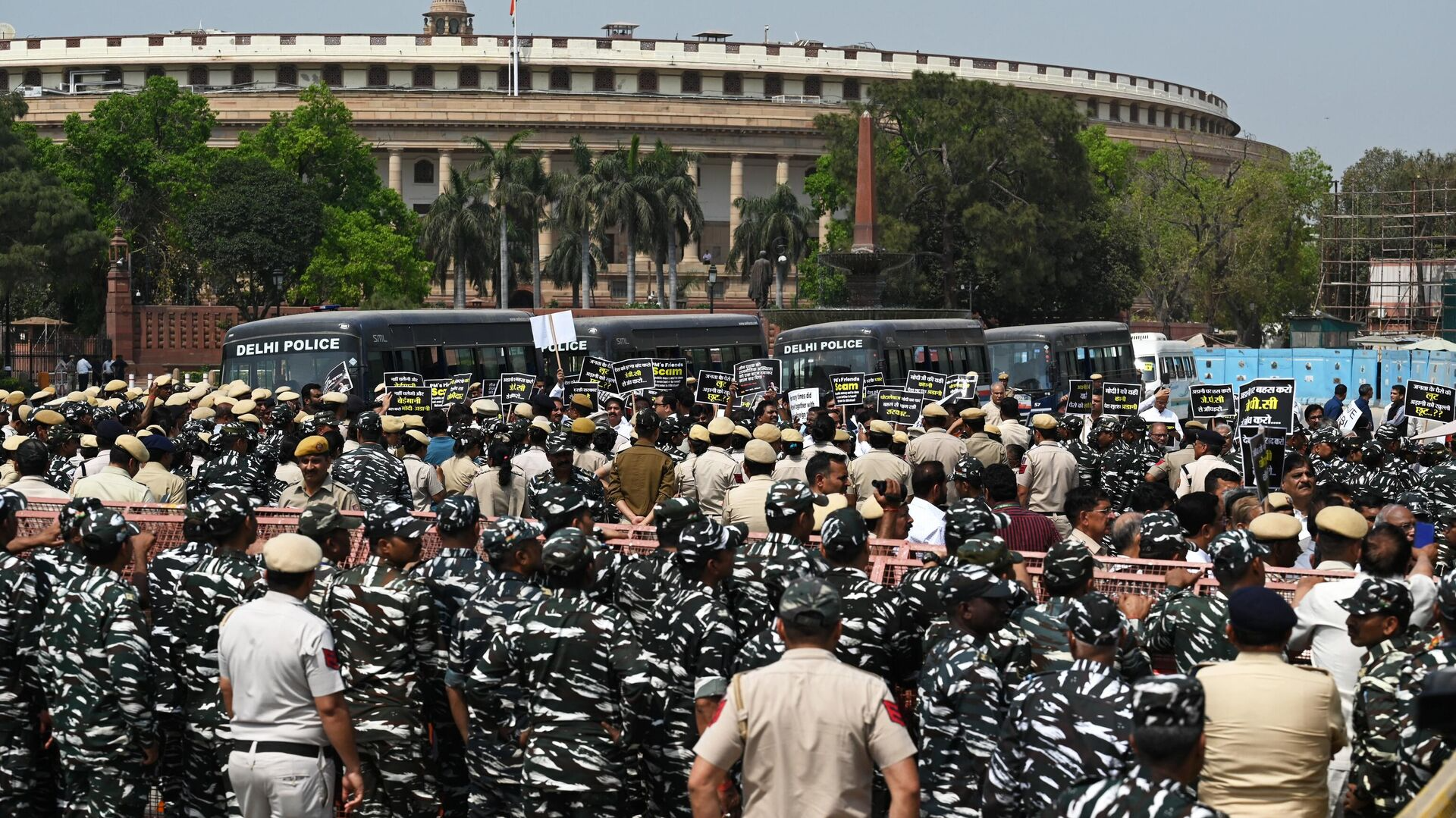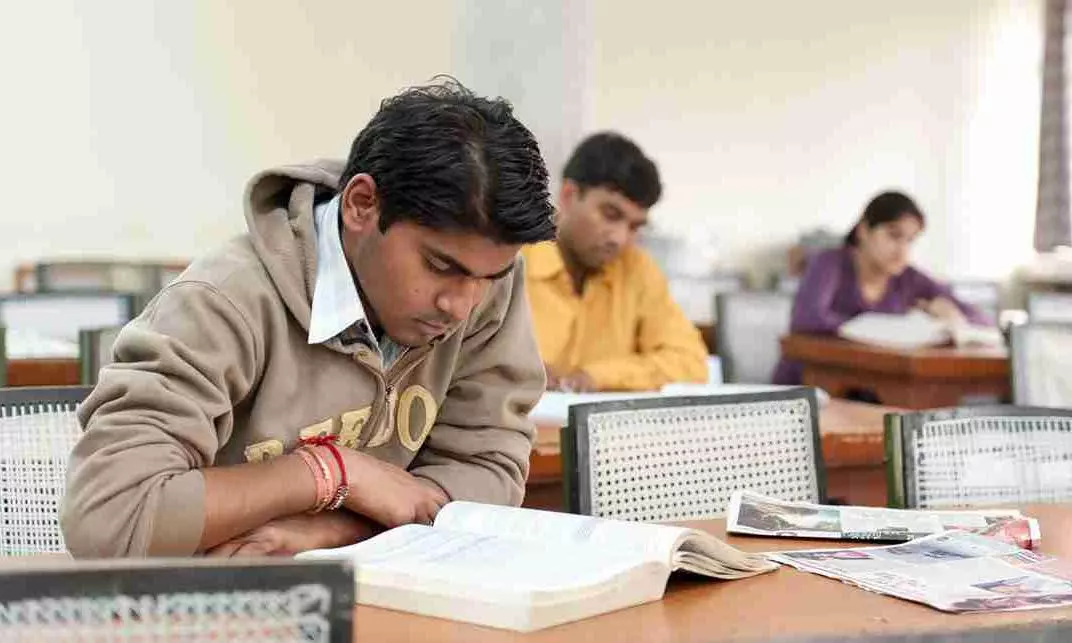Heatwave Alert Issued in Central India
Posted On July 11, 2025
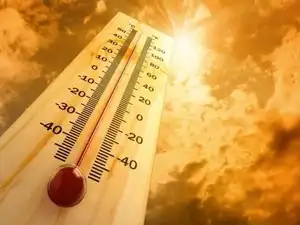
Heatwave Alert Persists in Central India- A Lingering Challenge Amidst Monsoon's Advance
Even as the much-anticipated Southwest Monsoon makes swift progress across large swathes of India, bringing relief to many regions, parts of Central India continue to reel under intense heatwave conditions. This persistent heat, particularly affecting areas of Madhya Pradesh, Maharashtra, and Chhattisgarh, poses significant health risks and highlights the localized complexities of India's vast and diverse meteorological landscape. While the rest of the nation breathes a collective sigh of relief with the onset of rains, the battle against searing temperatures continues in these central states, challenging daily life and public health systems.
The India Meteorological Department (IMD) has maintained a heatwave alert for several districts within Central India. Despite the monsoon having theoretically covered the entire country by June 29th-a remarkable nine days ahead of its typical schedule of July 8th-some areas in the central belt are yet to experience the full, sustained force of the monsoonal showers that would effectively break the heat spell. This situation means that while the broader atmospheric conditions are conducive to monsoon, localized factors are delaying the cooling relief. Temperatures are consistently registering several degrees Celsius above the seasonal average, pushing daily highs into uncomfortable and dangerous territories, well exceeding the 40°C mark that typically defines a heatwave in the plains.
The meteorological factors contributing to this lingering heat in Central India are complex and nuanced. While the monsoon trough, the elongated zone of low pressure that drives rainfall, has indeed advanced northward, its specific positioning and the localized atmospheric conditions play a crucial role. Areas experiencing the heatwave might be under the influence of persistent dry, hot winds originating from the northwest, or they may be experiencing limited cloud cover, preventing the much-needed cooling effect of rain and increased humidity. Unlike other regions that have seen robust pre-monsoon showers and the initial thrust of the monsoon, these central pockets seem to be caught in a transitional phase where the dry, hot air masses still dominate, resisting the moist, cooler monsoonal winds. The IMD is closely monitoring these microclimatic patterns, including localized high-pressure areas that could be impeding monsoon progression, to predict when the monsoon will fully establish itself across these remaining heat-affected zones.
The most pressing concern during a heatwave of this intensity and duration is its profound and multifaceted impact on public health. The continuous exposure to high temperatures can lead to a spectrum of heat-related illnesses, ranging from mild heat rashes and cramps to severe conditions like heat exhaustion and potentially fatal heat stroke. Vulnerable populations - including infants and young children whose thermoregulation is less developed, the elderly who may have reduced thirst perception and underlying health conditions, individuals with chronic health conditions (such as heart disease, kidney disease, or diabetes), and outdoor laborers who face unavoidable exposure - are particularly at heightened risk. Symptoms to watch for include dizziness, headache, nausea, muscle cramps, and excessive sweating, which can progress to more alarming signs such as confusion, disorientation, rapid heartbeat, hot and dry skin (indicating a failure of the body's cooling mechanism), and even unconsciousness in severe cases.
Authorities in the affected Central Indian states have issued comprehensive public health advisories, urging residents to take stringent precautions to protect themselves. These advisories emphasize the importance of staying hydrated by drinking plenty of water frequently, even when not feeling thirsty, and consuming oral rehydration solutions (ORS), buttermilk (lassi), fresh fruit juices, or lemon water with a pinch of salt to replenish electrolytes. People are strongly advised to avoid direct exposure to the sun, especially during peak afternoon hours (typically 12-00 noon to 3-00 PM), and to reschedule strenuous outdoor activities or work to cooler parts of the day, such as early mornings or late evenings. Wearing light-colored, loose-fitting cotton clothing, using umbrellas or hats, and ensuring adequate ventilation at home or workplaces are also crucial recommendations. Public health campaigns are actively disseminating this information through various media channels to ensure widespread awareness and compliance.
Beyond immediate health concerns, the prolonged heatwave also has broader socio-economic implications for Central India, a region with a significant agricultural footprint. Farmers in these areas may face setbacks as they await optimal soil moisture levels for sowing Kharif crops like rice, maize, and soybeans. Delayed sowing can lead to reduced yields or necessitate shifts to less water-intensive crops, impacting food security and rural incomes. Livestock can also suffer from heat stress, leading to decreased milk production, reduced fertility, and increased susceptibility to diseases, thereby affecting the vital dairy sector and the livelihoods dependent on it. The increased demand for electricity for cooling purposes, both in homes and for agricultural pumps, can further strain already stretched power grids, potentially leading to outages and compounding the distress.
As the monsoon continues its dynamic, albeit uneven, progress across the subcontinent, the focus remains keenly on Central India, where the battle against the heat persists. While the IMD's extended range forecast for July generally predicts above-normal rainfall for the country as a whole, the specific timing and intensity of the monsoon's full establishment in these heat-affected pockets will be crucial for lasting relief. Continuous monitoring by meteorological agencies, prompt dissemination of localized weather alerts, and robust public health interventions are paramount to mitigate the risks associated with this lingering heatwave. Ensuring accessible healthcare facilities for heat-related emergencies and supporting agricultural communities through advisories on resilient farming practices are also vital steps, as India collectively navigates the complex and often challenging transition into its crucial monsoon season.
Even as the much-anticipated Southwest Monsoon makes swift progress across large swathes of India, bringing relief to many regions, parts of Central India continue to reel under intense heatwave conditions. This persistent heat, particularly affecting areas of Madhya Pradesh, Maharashtra, and Chhattisgarh, poses significant health risks and highlights the localized complexities of India's vast and diverse meteorological landscape. While the rest of the nation breathes a collective sigh of relief with the onset of rains, the battle against searing temperatures continues in these central states, challenging daily life and public health systems.
The India Meteorological Department (IMD) has maintained a heatwave alert for several districts within Central India. Despite the monsoon having theoretically covered the entire country by June 29th-a remarkable nine days ahead of its typical schedule of July 8th-some areas in the central belt are yet to experience the full, sustained force of the monsoonal showers that would effectively break the heat spell. This situation means that while the broader atmospheric conditions are conducive to monsoon, localized factors are delaying the cooling relief. Temperatures are consistently registering several degrees Celsius above the seasonal average, pushing daily highs into uncomfortable and dangerous territories, well exceeding the 40°C mark that typically defines a heatwave in the plains.
The meteorological factors contributing to this lingering heat in Central India are complex and nuanced. While the monsoon trough, the elongated zone of low pressure that drives rainfall, has indeed advanced northward, its specific positioning and the localized atmospheric conditions play a crucial role. Areas experiencing the heatwave might be under the influence of persistent dry, hot winds originating from the northwest, or they may be experiencing limited cloud cover, preventing the much-needed cooling effect of rain and increased humidity. Unlike other regions that have seen robust pre-monsoon showers and the initial thrust of the monsoon, these central pockets seem to be caught in a transitional phase where the dry, hot air masses still dominate, resisting the moist, cooler monsoonal winds. The IMD is closely monitoring these microclimatic patterns, including localized high-pressure areas that could be impeding monsoon progression, to predict when the monsoon will fully establish itself across these remaining heat-affected zones.
The most pressing concern during a heatwave of this intensity and duration is its profound and multifaceted impact on public health. The continuous exposure to high temperatures can lead to a spectrum of heat-related illnesses, ranging from mild heat rashes and cramps to severe conditions like heat exhaustion and potentially fatal heat stroke. Vulnerable populations - including infants and young children whose thermoregulation is less developed, the elderly who may have reduced thirst perception and underlying health conditions, individuals with chronic health conditions (such as heart disease, kidney disease, or diabetes), and outdoor laborers who face unavoidable exposure - are particularly at heightened risk. Symptoms to watch for include dizziness, headache, nausea, muscle cramps, and excessive sweating, which can progress to more alarming signs such as confusion, disorientation, rapid heartbeat, hot and dry skin (indicating a failure of the body's cooling mechanism), and even unconsciousness in severe cases.
Authorities in the affected Central Indian states have issued comprehensive public health advisories, urging residents to take stringent precautions to protect themselves. These advisories emphasize the importance of staying hydrated by drinking plenty of water frequently, even when not feeling thirsty, and consuming oral rehydration solutions (ORS), buttermilk (lassi), fresh fruit juices, or lemon water with a pinch of salt to replenish electrolytes. People are strongly advised to avoid direct exposure to the sun, especially during peak afternoon hours (typically 12-00 noon to 3-00 PM), and to reschedule strenuous outdoor activities or work to cooler parts of the day, such as early mornings or late evenings. Wearing light-colored, loose-fitting cotton clothing, using umbrellas or hats, and ensuring adequate ventilation at home or workplaces are also crucial recommendations. Public health campaigns are actively disseminating this information through various media channels to ensure widespread awareness and compliance.
Beyond immediate health concerns, the prolonged heatwave also has broader socio-economic implications for Central India, a region with a significant agricultural footprint. Farmers in these areas may face setbacks as they await optimal soil moisture levels for sowing Kharif crops like rice, maize, and soybeans. Delayed sowing can lead to reduced yields or necessitate shifts to less water-intensive crops, impacting food security and rural incomes. Livestock can also suffer from heat stress, leading to decreased milk production, reduced fertility, and increased susceptibility to diseases, thereby affecting the vital dairy sector and the livelihoods dependent on it. The increased demand for electricity for cooling purposes, both in homes and for agricultural pumps, can further strain already stretched power grids, potentially leading to outages and compounding the distress.
As the monsoon continues its dynamic, albeit uneven, progress across the subcontinent, the focus remains keenly on Central India, where the battle against the heat persists. While the IMD's extended range forecast for July generally predicts above-normal rainfall for the country as a whole, the specific timing and intensity of the monsoon's full establishment in these heat-affected pockets will be crucial for lasting relief. Continuous monitoring by meteorological agencies, prompt dissemination of localized weather alerts, and robust public health interventions are paramount to mitigate the risks associated with this lingering heatwave. Ensuring accessible healthcare facilities for heat-related emergencies and supporting agricultural communities through advisories on resilient farming practices are also vital steps, as India collectively navigates the complex and often challenging transition into its crucial monsoon season.

